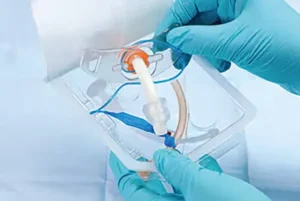A Look at Vaporized Hydrogen Peroxide as a Sterilization Option
 VH2O2 sterilization has good material compatibility with most materials commonly used to make medical products such as trachea tubes. (Credit: Nelson Labs)
VH2O2 sterilization has good material compatibility with most materials commonly used to make medical products such as trachea tubes. (Credit: Nelson Labs)The changing regulatory landscape and innovation of medical products is driving an interest in additional options for medical product sterilization. One nontraditional way manufacturers can sterilize medical products that is becoming increasingly popular is with sterilizers that use vaporized hydrogen peroxide (VH2O2). The publication of ISO 22441:2022 and its recognition by the United States Food and Drug Administration (US FDA), coupled with the FDA’s reclassification of VH2O2 sterilization as an Established Category A process in 2024, supports this modality of sterilization.
Each sterilization modality has its limitations, and there is not one modality that works for all the medical products on the market or in development. With the vast number of materials used to manufacture medical products, manufacturers may find that their traditional methods of sterilization are not options for their new or modified products. One benefit of VH2O2 sterilization is that it has good material compatibility with most materials commonly used to make medical products; therefore, it may be a sterilization option for products that lack compatibility with other sterilization modalities.
In spite of the strong compatibility between VH2O2 and many material types, care must be taken, as with any modality, to ensure that proper vetting is performed for this approach to sterilization. One significant material-compatibility issue for VH2O2 sterilization is caused by cellulosic materials. When packaging contains cellulose, devices must be removed from secondary packaging prior to sterilization. Consequently, VH2O2 sterilization tends to be a better sterilization option for products in small batches and also for products that are processed in health care facilities.
Guidance on material compatibility for VH2O2 sterilization and many other sterilization modalities can be found in AAMI TIR17, in which biocompatibility, toxicology, and other considerations that may require screening can also be found. For materials and medical products where compatibility is unknown, VH2O2 exposure and screening tests can be performed. Testing experts can help formulate strategies for screening studies.









